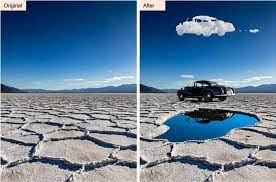AI is revolutionizing the field of photo editing in several ways. Here are some ways in which AI is changing photo editing:
Automated Editing: AI algorithms can now perform automated photo editing tasks. They can analyze an image and make intelligent adjustments to improve its quality. For example, AI can adjust brightness, contrast, color balance, and sharpness automatically, saving time for photographers and editors.
Object and Scene Recognition: AI algorithms can recognize objects and scenes within an image. This capability enables intelligent editing tools that can automatically identify specific elements, such as faces, buildings, or landscapes. It allows for selective adjustments or enhancements to be applied easily to specific parts of an image.
Image Restoration and Enhancement: AI-powered algorithms can restore and enhance old or damaged photographs. They can intelligently remove scratches, dust, or noise from images, restore faded colors, and even upscale low-resolution images while maintaining quality.
Style Transfer and Filters: AI can apply artistic styles to photos using neural networks. Style transfer algorithms can transform images to resemble famous artworks or emulate specific styles, giving photographers and editors creative options for image manipulation. AI-powered filters can also apply various effects to images, such as vintage, cinematic, or high-dynamic-range (HDR) looks.
Intelligent Content Creation: AI algorithms can generate realistic or composite images based on given inputs. For example, AI can create realistic landscapes, generate missing parts of an image, or even insert objects into photographs seamlessly. This capability opens up new possibilities for creative expression and image composition.
Facial Recognition and Editing: AI algorithms have advanced facial recognition capabilities. They can detect and identify faces in photos accurately. AI-powered editing tools can use this information to automatically enhance facial features, retouch skin imperfections, remove blemishes, or even change facial expressions.
Smart Cropping and Composition: AI can analyze the content of an image and suggest optimal crop suggestions or recompose the photo to adhere to the rule of thirds or other compositional guidelines. This feature helps photographers and editors improve the overall visual impact of their images.
These advancements in AI are empowering photographers and editors to achieve better results more efficiently and creatively. Human expertise and creative decision-making are still crucial in the photo editing process, and AI tools should be seen as aids rather than replacements for human skills.

